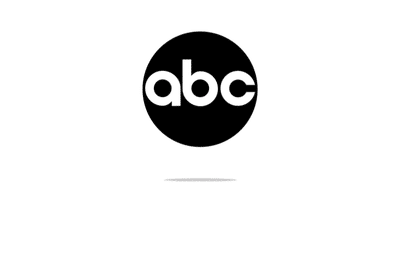With Minnesota on the cusp of establishing an adult-use cannabis market, I felt it appropriate to publish this report on the potential economic impact. The following article summarizes the economic benefits of regulating adult-use cannabis in Minnesota, including an analysis of the potential revenue, job creation, and savings.
Key Findings
- We estimate that approximately 721,576 adults in Minnesota consume cannabis on a monthly basis. If Minnesota established a regulated adult-use cannabis market, we project annual sales of $1.4 billion.
- Minnesota can generate more than $282 million in tax revenue per year if it taxes adult-use cannabis sales at the same rate as Colorado.
- Similarly, Minnesota could make an additional $6.1 million per year through annual license fees.
- A regulated cannabis market in Minnesota would create 20,000 – 40,000 cannabis jobs and tens of thousands of jobs indirectly.
- Minnesota can save approximately $29 million in criminal justice costs per year by ending cannabis misdemeanor arrests and prosecutions.
Economic Benefits of Regulating Adult-Use Cannabis in Minnesota
Market Size
We estimate that approximately 721,576 adults 21 and older in Minnesota consume cannabis on a monthly basis.
To arrive at this projection, we collected data from the U.S. Census that indicates Minnesota has an adult population (21 and older) of 4,238,332 (based on 2021 ACS 5-Year Estimates).
According to the 2021 National Survey on Drug Use and Health (NSDUH) published by U.S. Substance Abuse and Mental Health Services Administration, approximately 13.62% of adults in Minnesota reported using cannabis within the past month.
However, many adults underreport their cannabis use to federal government surveyors by about 25%, as reported by the RAND Corporation. Therefore, we estimate that 17.03% of Minnesota adults are past-month cannabis consumers.
Sales
If Minnesota established a regulated adult-use cannabis market, we estimate annual sales of approximately $1,372,869,485.
To produce this estimate, we combined data from the NSDUH and actual sales figures from the two longest-running adult-use cannabis markets, Colorado and Washington (since 2014).
In short, adult consumers in Colorado spent an average of $2,157 on cannabis products in 2021, as reported by the Colorado Department of Revenue. On the other hand, adult consumers in Washington spent an average of $1,648 on cannabis products in 2021, as reported by Washington State Liquor and Cannabis Board.
By averaging these two figures, we estimate that adult consumers in Minnesota will spend about $1,903 on cannabis products per consumer annually.
Tax Revenue
The effective tax rate varies between U.S. States with regulated cannabis markets. For instance, the effective tax rates range from 7% in Oklahoma to 37% in Washington. The chart below displays the effective tax rates of five markets and the amount of revenue Minnesota would generate if it applied those rates.
If Minnesota adopts the same tax rate as Colorado (20.6%), based on our estimate of approximately $1.4 billion in annual sales, Minnesota would generate ~$282,811,114 per year in cannabis tax revenue.
Fee Revenue
If Minnesota establishes a regulated cannabis market, the state can generate revenue from application and license fees. For example, Colorado has generated, on average, ~$12.9 million per year in cannabis-related fees, as reported by the Colorado Department of Revenue.
We predict that Minnesota will have about 1222 licensed cannabis businesses. To arrive at this projection, we took the number of licensed cannabis businesses in Colorado (1750) and divided it by the estimated number of adult consumers in Colorado (1,033,418).
Thus, if Minnesota enforces a $5,000 annual license fee, the state will generate approximately $6,109,617 in yearly revenue. This revenue could help to offset the costs of administering the regulated cannabis market.
Job Creation
Since Minnesota’s population is similar to that of Colorado and Washington, the number of cannabis jobs created will likely resemble each other. According to Leafly’s Job Report for 2022, the number of cannabis jobs in Colorado and Washington equaled 38,337 and 22,516, respectively. As such, we estimate that the economic impact of regulating cannabis in Minnesota would create 20,000 – 40,000 jobs.
Additionally, a regulated cannabis market in Minnesota would require various services and vendors, including contractors, construction firms, attorneys, equipment producers, HVAC vendors, and more. We predict the economic impact of a regulated cannabis market in Minnesota would create tens to thousands of indirect jobs.
Criminal Justice Savings
In addition to generating revenue and increasing employment, a regulated adult-use cannabis market in Minnesota would allow the state to realize significant savings in criminal justice costs.
Research shows that law enforcement officers spend an average of 4 hours per cannabis arrest, as reported in a memo titled “The Economics of Misdemeanor Marijuana Prosecution.”
Based on data collected from the Minnesota Judicial Branch, Minnesota prosecutors had 10,168 active misdemeanor cannabis possession cases on their dockets in 2022. Similarly, Minnesota has approximately 10,625 licensed peace officers, as reported by the Minnesota Board of Peace Officer Standards and Training.
According to the U.S. Bureau of Labor Statistics, law enforcement officers’ average hourly compensation rate is $34.32 per hour, as reported in the the Occupational Employment and Wages Report (May 2022).
As such, we estimate that licensed police officers spent approximately 40,672 hours in 2022 arresting and transporting misdemeanor cannabis offenders, which cost taxpayers in Minnesota approximately:
- $1,395,863 from Peace Officer Labor Hours;
- $1,820,072 from Crime Lab Testing;
- $13,408,542 from Jailing;
- $4,860,304 from District Attorney Office Expenses;
- $4,473,920 from Court-Appointed Defense Counsel for Indigent Defendants; and
- $3,019,896 from Court Costs.
Minnesota would save ~$28,978,597 per year in criminal justice costs if the state stopped arresting and prosecuting individuals for misdemeanor cannabis crimes.
Conclusion
From new revenue generation to costs savings in the millions, the economic benefits of regulating cannabis in Minnesota speak for themself. The state has the potential to generate $28 million in Tax revenue, $6.1 million in Fee revenue, and $28 million in criminal justice cost savings. Additionally, the adult-use cannabis market would create tens of thousands of jobs. Not to mention Minnesota’s cannabis social equity initiatives that will directly benefit those more impacted by the war on drugs.
If you’re interested in learning more about the Minnesota adult-use cannabis market, including how to apply for and win a business license, check out this resource created by our Minnesota cannabis consultants.









